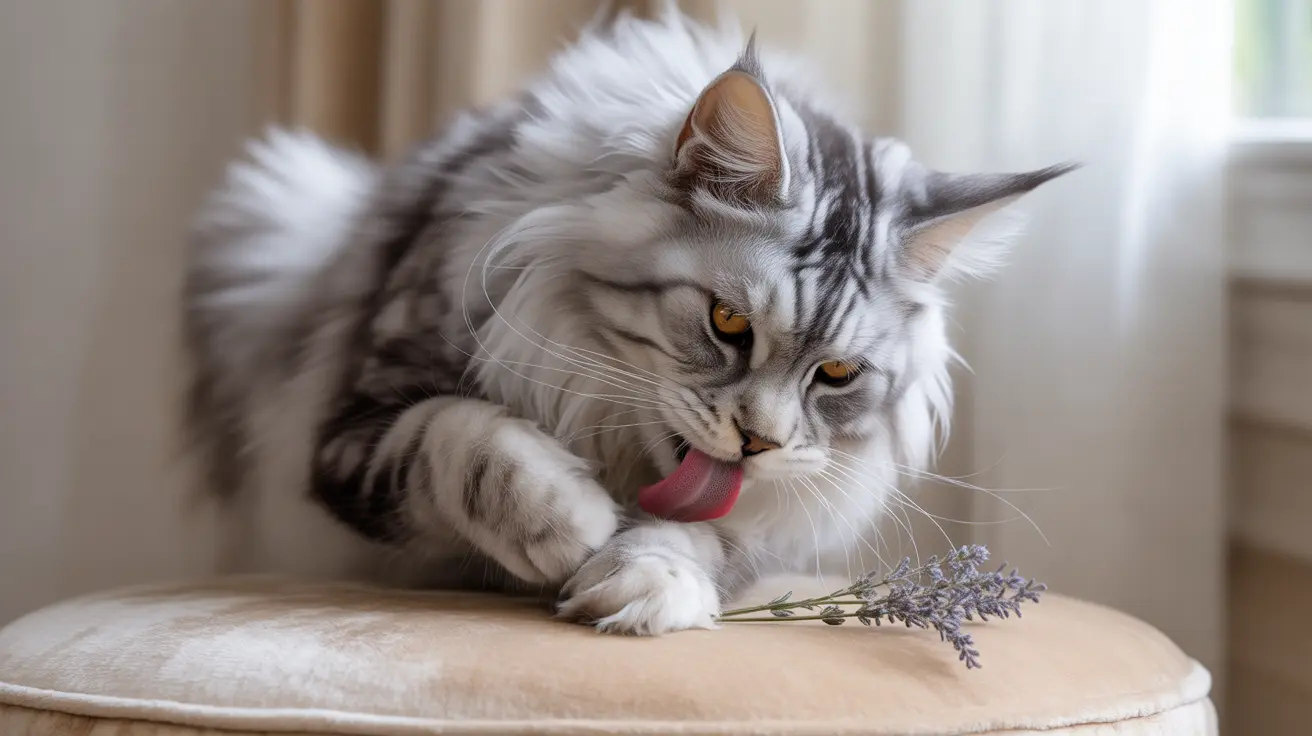If you've noticed your cat pulling out their own fur, you're likely experiencing a concerning situation known as psychogenic alopecia or overgrooming. This behavior can result in bald patches, skin irritation, and significant distress for both you and your feline companion.
Understanding why cats engage in this self-destructive behavior is crucial for effective treatment. From medical conditions to psychological factors, several underlying causes could be triggering your cat's fur-pulling behavior.
Common Medical Causes of Fur Pulling
When cats begin pulling out their fur, the first step is to rule out medical conditions. Several health issues can trigger this behavior:
Parasitic Infections
Fleas, mites, and other parasites can cause intense itching, leading cats to pull out their fur in an attempt to find relief. Even indoor cats can be affected by these unwanted visitors.
Allergies and Skin Conditions
Food allergies, environmental allergens, and skin infections can cause significant discomfort, prompting excessive grooming and fur pulling. Common allergens include certain proteins in food, pollen, and household cleaning products.
Psychological and Environmental Triggers
Once medical causes are ruled out, psychological factors often emerge as the primary cause of fur pulling:
Stress and Anxiety
Major life changes, such as moving to a new home, introducing new pets, or alterations in daily routines, can trigger stress-related overgrooming. Some cats use excessive grooming as a coping mechanism when feeling anxious or overwhelmed.
Environmental Changes
Changes in the cat's environment, including new furniture, construction noise, or even changes in their human's schedule, can lead to fur-pulling behavior as a stress response.
Identifying and Diagnosing the Problem
Look for these key signs to help identify the root cause of your cat's fur pulling:
- Visible bald patches or thinning fur
- Excessive time spent grooming
- Skin irritation or scabs
- Changes in behavior or mood
- Focusing on specific body areas while grooming
Treatment Approaches
Addressing fur pulling requires a comprehensive approach:
Medical Treatment
Your veterinarian may prescribe:
- Parasite prevention medication
- Antihistamines for allergies
- Antibiotics for skin infections
- Anti-anxiety medications when necessary
Environmental Modifications
Creating a stress-free environment through:
- Establishing consistent daily routines
- Providing engaging toys and activities
- Creating safe spaces and hiding spots
- Using pheromone diffusers to reduce anxiety
Prevention Strategies
To help prevent fur pulling behavior:
- Maintain regular veterinary check-ups
- Keep parasite prevention current
- Provide environmental enrichment
- Monitor and minimize potential stressors
- Establish consistent daily routines
Frequently Asked Questions
Why is my cat pulling out its own fur and developing bald patches?
Cats may pull out their fur due to medical issues like parasites or allergies, or psychological factors such as stress and anxiety. Bald patches typically develop in areas where the cat focuses their excessive grooming.
What medical conditions can cause a cat to overgroom and pull out its fur?
Common medical conditions include parasitic infections (fleas, mites), allergies (food or environmental), skin infections, hormonal imbalances, and pain-related conditions like arthritis.
How can stress or anxiety lead to my cat compulsively pulling its fur?
Stress triggers a physiological response that can lead to compulsive behaviors like overgrooming. Cats often use grooming as a self-soothing mechanism when anxious, which can become excessive under prolonged stress.
What treatments or interventions can help stop my cat from pulling out its fur?
Treatment depends on the underlying cause but may include medical interventions for physical conditions, environmental modifications to reduce stress, behavior modification techniques, and in some cases, anti-anxiety medications.
How can I tell if my cat's fur pulling is due to allergies, parasites, or behavioral issues?
A thorough veterinary examination is necessary to determine the root cause. The pattern of fur loss, presence of skin irritation, timing of the behavior, and response to various treatments can help identify whether the cause is medical or behavioral.
If your cat is pulling out their fur, don't wait to seek professional help. Early intervention is key to preventing the behavior from becoming a chronic issue and ensuring your cat's health and happiness.






